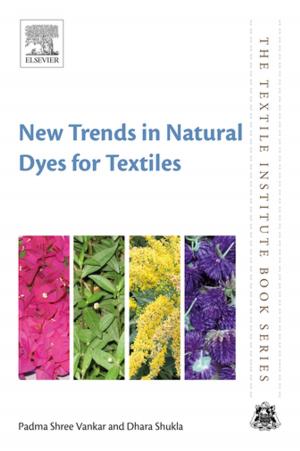Child Abuse Investigation Field Guide
Nonfiction, Reference & Language, Law, Forensic Science, Social & Cultural Studies, Social Science, Crimes & Criminals, Criminology| Author: | D'Michelle P. DuPre, Jerri Sites | ISBN: | 9780128025666 |
| Publisher: | Elsevier Science | Publication: | January 13, 2015 |
| Imprint: | Academic Press | Language: | English |
| Author: | D'Michelle P. DuPre, Jerri Sites |
| ISBN: | 9780128025666 |
| Publisher: | Elsevier Science |
| Publication: | January 13, 2015 |
| Imprint: | Academic Press |
| Language: | English |
Children are suffering from a hidden epidemic of child abuse and neglect. Every year more than 3 million reports of child abuse are made in the United States involving more than 6 million children. The United States has one of the worst records among industrialized nations – losing on average between four and seven children every day to child abuse and neglect. The WHO reports that over 40 million children, below the age of 15, are subjected to child abuse each year. Domestic violence in the home increases that risk threefold.
Child Abuse Investigation Field Guide is intended to be a resource for anyone working with cases involving abuse, neglect or sexual assault of children. It is designed to be a quick reference and focuses on the best practices to use during a child abuse investigation. The guide explains the Minimal Facts Interview, the Forensic Interview, and the entire process from report to court. It is understood that every state has different statutes regarding these topics; however the objectives of recognizing, reporting, and investigating cases of this nature are the same. Just as every crime scene is different, every case involving a child is different. Best practices and standard procedures exist to help ensure cases are discovered, reported and investigated properly, to ensure good documentation is obtained to achieve prosecution and conviction. This field guide will be a useful tool for law enforcement, child protective services, social service caseworkers, child advocates, and other personnel and agencies working for the welfare of children.
- Includes protocols and best practices for child abuse investigations
- Explains the Multidisciplinary Team approach and why it is useful
- Describes the Minimal Facts Interview and the Forensic Interview
- Walks the reader from the initial report, through the investigation process, to pre-trial preparation and provides tips on court testimony
- Portable and affordable, the guide is tabbed for easy access of specific information while in the field and can ensure that team members are “on the same page throughout the investigation
Children are suffering from a hidden epidemic of child abuse and neglect. Every year more than 3 million reports of child abuse are made in the United States involving more than 6 million children. The United States has one of the worst records among industrialized nations – losing on average between four and seven children every day to child abuse and neglect. The WHO reports that over 40 million children, below the age of 15, are subjected to child abuse each year. Domestic violence in the home increases that risk threefold.
Child Abuse Investigation Field Guide is intended to be a resource for anyone working with cases involving abuse, neglect or sexual assault of children. It is designed to be a quick reference and focuses on the best practices to use during a child abuse investigation. The guide explains the Minimal Facts Interview, the Forensic Interview, and the entire process from report to court. It is understood that every state has different statutes regarding these topics; however the objectives of recognizing, reporting, and investigating cases of this nature are the same. Just as every crime scene is different, every case involving a child is different. Best practices and standard procedures exist to help ensure cases are discovered, reported and investigated properly, to ensure good documentation is obtained to achieve prosecution and conviction. This field guide will be a useful tool for law enforcement, child protective services, social service caseworkers, child advocates, and other personnel and agencies working for the welfare of children.
- Includes protocols and best practices for child abuse investigations
- Explains the Multidisciplinary Team approach and why it is useful
- Describes the Minimal Facts Interview and the Forensic Interview
- Walks the reader from the initial report, through the investigation process, to pre-trial preparation and provides tips on court testimony
- Portable and affordable, the guide is tabbed for easy access of specific information while in the field and can ensure that team members are “on the same page throughout the investigation















